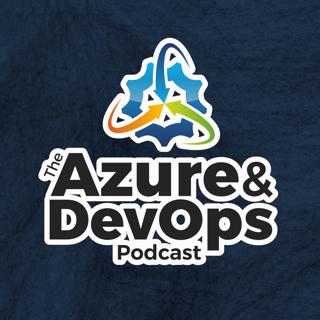
Beth Massi on All Things .NET - Episode 26
This week, Jeffrey welcomes his guest, Beth Massi! Beth is the Product Marketing Manager for the entire .NET platform. She’s also on the Board of Directors for .NET Foundation. She has been with Microsoft for over 12 years, originally starting out as a Senior Program Manager. Beth fell in love with the .NET platform when it was first released in 2000 and hasn’t stopped working with it since — making her the perfect person to talk all things .NET with Jeffrey today! In this episode, they discuss whether or not developers should move to .NET Core (or wait until .NET Core 3), the .NET architecture center and resources, and the open source movement. They also discuss Beth’s background with .NET, her advice to those coming into the field now, how to become a member or Board member of the .NET Foundation, and more. Topics of Discussion: [:45] About today’s show with Beth Massi. [1:02] Beth introduces herself, talks about her career journey, and shares details of her current job and team. [11:30] Beth’s take on whether or not you should move over to .NET Core or wait until .NET Core 3. [17:06] Beth and Jeffrey talk about how many developers are taking advantage of working in .NET Framework (at least 4.6.1) which allows them to make use of the .NET Core libraries that are compiled for .NET Standard 2. [19:36] Talking Rockford Lhotka and moving apps .NET Core. [20:33] A word from Azure DevOps Podcast’s sponsor: Clear Measure. [20:58] About the dot.net architecture center and the resources offered. [22:26] How is C# doing as far as language popularity? [25:28] Beth talks languages, which to choose, and C# competitors. [27:39] Jeffrey and Beth discuss the shift to open source within companies and the open source movement. [33:20] Beth’s advice to those just coming into the field now. [35:25] Beth explains how to become a part of the .NET Foundation Board, her role at the .NET Foundation, and what she’s looking forward to with the foundation. [37:11] How to become a member of the .NET Foundation. [38:40] How Jeffrey and Beth hope the .NET Foundation expands. [40:20] What Beth recommends you follow-up on after listening to today’s show! Mentioned in this Episode: Azure DevOps Clear Measure (Sponsor) Beth Massi (LinkedIn) .NET .NET Foundation Rockford Lhotka’s Blog CSLA .NET Visual Studio 2019 Launch Event Want to Learn More? Visit AzureDevOps.Show for show notes and additional episodes.
4 Mars 201941min

Martin Woodward on Azure DevOps With GitHub - Episode 25
Today’s featured guest is Martin Woodward! Martin is a Principal Group Program Manager on the Azure DevOps team at Microsoft as well as the Vice President of the .NET Foundation. Martin has been with Microsoft quite a while, joining back in 2009. When he first started with Microsoft, his focus was on open source, then bringing GitHub into TFS and Microsoft, and then helping with .NET team. He even created Microsoft’s original account on GitHub. In today’s episode, Martin and Jeffrey dive right into the topic of Azure DevOps with GitHub; discussing some of the changes since Microsoft acquired GitHub, whether you should choose to work with Azure Repos or GitHub, and how to use Azure DevOps Services with GitHub. Topics of Discussion: [1:07] Jeffrey introduces Scott and welcomes him to the show! [1:50] About Martin’s journey at Microsoft. [6:50] Why and when Martin opened the original Microsoft GitHub account. [9:11] Martin and Jeffrey discuss some of the early projects and changes to the Outercurve Foundation (AKA CodePlex Foundation). [11:10] Is the Outercurve Foundation still going? [11:36] Martin and Jeffrey talk interesting offerings from the .NET Foundation. [16:15] How to get sponsorships for user groups. [17:40] Since Microsoft acquired GitHub, what should people be using; Git Repositories or GitHub? And is Azure Repos going to die? [21:09] Why Azure Pipelines is such a simple, powerful solution. [22:42] A word from Azure DevOps Podcast’s sponsor: Clear Measure. [23:07] Martin addresses the “elephant in the room”: Azure Repos. [25:50] Between Azure Repos and GitHub, was does Martin see being the premiere option 10 years down the line? [30:17] The importance of having a GitHub account. [32:30] Martin and Jeffrey talk about how the industry is adopting more engineering practices and collaboration which makes DevOps work so well. [34:49] Does Martin agree with Sam Guckenheimer’s ideas on DevOps (from when he was on the podcast)? [37:09] Martin’s advice on how to use Azure DevOps Services with GitHub. [47:12] Martin’s recommendations on what to follow-up on after listening to this week’s podcast! Mentioned in this Episode: Azure DevOps Clear Measure (Sponsor) Martin Woodward (LinkedIn) .NET Foundation Outercurve Foundation (CodePlex Foundation) Azure DevOps User Group Meetup CruiseControl.NET Jenkins TeamCity Azure DevOps Server The Azure DevOps Podcast episode 003: “Sam Guckenheimer on Testing, Data Collection, and the State of DevOps Report” Azure Pipelines Want to Learn More? Visit AzureDevOps.Show for show notes and additional episodes.
25 Feb 201948min

Scott Hunter on DevOps Capabilities in Azure - Episode 24
On today’s episode, Scott Hunter joins your host, Jeffrey Palermo, to discuss DevOps capabilities in Azure. Scott is the Director of Program Management for .NET at Microsoft. When Scott first joined Microsoft back in 2007, he was working on the ASP.NET team. As the Director of Program Management of .NET, he and his team build .NET Core, .NET Framework, ASP.NET, Entity Framework, managed languages (C#/F#/VB), as well as the Web and .NET Tooling for Visual Studio. Join Scott Hunter and Jeffrey as they take you through the differences between .NET Core and .NET Framework, when and why you should move to .NET Core 3.0 in the future, how .NET Standard bridges the gap between these two, where all the different architectures fit into the .NET ecosystem, and an update and overview on WebAssembly and Blazor. Scott and Jeffrey also give you a preview of their upcoming book, .NET DevOps for Azure, and their motivation behind it. Topics of Discussion: [:46] Jeffrey introduces Scott and welcomes him to the show! [2:46] Scott gives an overview of what his team at Microsoft builds. [4:10] What is .NET Core 3.0 and when should people on .NET Framework consider moving over to it? What’s the difference between the two? [11:42] How should we think of .NET Core 3.0 and .NET Framework, moving forward? [13:20] How .NET Standard bridges the gap between .NET Core and .NET Framework, opening up possibilities. [16:08] Scott gives an overview and update on WebAssembly and Blazor — an experimental project utilizing .NET Core. [20:55] Options that will be available with the .NET Core 3.0 release. [25:25] A word from Azure DevOps Podcast’s sponsor: Clear Measure. [25:52] Some benefits of Blazor. [28:00] Would you still be deploying as an Azure website when using Blazor or does it have any changes to the deployment configuration in Azure? [28:38] Is it mandatory to use SignalR Service or are Blazor apps baked in with the framework? [30:50] With so many options in the .NET ecosystem, where do all these architectures land? For example, monolith vs. microservices. [37:24] Scott and Jeffrey give a preview of their upcoming book, .NET DevOps for Azure, and the motivation behind it. [42:36] What Scott recommends listeners follow-up on after today’s episode. Mentioned in this Episode: Azure DevOps Clear Measure (Sponsor) .NET Core 3.0 Blazor WebAssembly Mono Azure Kubernetes Service (AKS) SignalR Service Monolith vs. Microservices .NET Architecture Guides DOT.NET Want to Learn More? Visit AzureDevOps.Show for show notes and additional episodes.
18 Feb 201943min

Simon Timms on Azure Functions and Processes - Episode 23
Simon Timms is a long-time freelance Software Engineer, multi-time Microsoft MVP co-host of ASP.NET Monsters on Channel 9, and also runs the Function Junction Youtube channel. He considers himself a generalist with a history of working in a diverse range of industries. He’s personally interested in A.I., DevOps, and microservices; and skilled in Software as a Service (SaaS), .NET Framework, Continuous Integration, C#, and JavaScript. He’s also written two books with Packt Publishing: Social Data Visualization with HTML5 and JavaScript and Mastering JavaScript Design Patterns. In this week’s episode, Simon and Jeffrey will be discussing Azure Functions and running processes in Azure. Simon explains how the internal model of Azure Functions works, the difference between Azure Functions and Durable Functions, the benefits and barriers to Azure Functions, and much, much more. Topics of Discussion: [:43] About today’s episode. [1:13] Simon’s career in software engineering and the high-points in his journey. [3:11] Simon gives a rundown of the options available for running backend jobs when targeting the Azure datacenter. [4:23] How is Azure Functions different from Webjobs? [7:47] How would you make the decision to run your web application or website using Azure Web Apps or App Service Plan versus Azure Functions with the consumption model? [10:01] Simon dives deeper into how Azure Functions works. [12:23] A word from Azure DevOps Podcast’s sponsor: Clear Measure. [12:48] Can you use Azure Functions for things that people traditionally had running as Azure Services or a scheduled task? [13:54] About Microsoft’s new framework, Durable Functions. [15:33] Is Durable Functions ready? When should people be adopting it? [17:02] How Window queue-based services translate into Azure Functions. [18:29] How the internal model of Azure Functions works. [20:02] Azure Functions vs. Durable Functions. [21:44] How long-running business transactions look with Durable Functions. [24:30] What the testing environment and process looks like on Durable Functions. [26:26] Simon outlines some of the application types and scenarios you can do in Azure Functions. [28:28] Places where Azure Functions are not really good. [30:03] Are there any barriers to portability to going back-and-forth between hosting your job as a web job, versus hosting it as an Azure Function. [32:02] When would Simon go for Azure Batch instead of Azure Functions? [36:54] What Simon recommends listeners follow-up on! Mentioned in this Episode: Azure DevOps Clear Measure (Sponsor) Function Junction Youtube Channel Simon Timms (Blog) ASP.NET Monsters Social Data Visualization with HTML5 and JavaScript, by Simon Timms Mastering JavaScript Design Patterns, by Simons Timms Azure App Service Data Factory Azure Functions Azure Web Apps Troy Hunt Have I Been Pwned? Microsoft Durable Functions The official Twitter account for Azure Functions Eduardo Laureano’s Twitter Jeff Hollan’s Twitter Mikhail Shilkov’s Twitter Want to Learn More? Visit AzureDevOps.Show for show notes and additional episodes.
11 Feb 201938min

Paul Stovell on Octopus Deploy - Episode 22
Paul Stovell, the founder and CEO of Octopus Deploy, joins the podcast today. Paul is an expert on all things automated deployment and Cloud operations. He started Octopus Deploy back in 2011, but prior to that, he worked as a consultant for about five years. Octopus Deploy is a pretty major player in the market. Their mission? To do automated deployments really, really well. Today, it helps over 20,000 customers automate their deployments, and employs 40 brilliant people. It can be integrated with Azure DevOps services and many other build services. On this week’s episode, Paul talks about his career journey and what led him to create Octopus Deploy; his accomplishments, goals, and visions for Octopus Deploy; which build servers integrate best with Octopus Deploy; his tips and tricks for how to best utilize it; and his vision for the future of DevOps. Topics of Discussion: [:51] About today’s guest — Paul Stovell. [1:06] Paul introduces himself and gives some background on his career journey. [3:36] Paul’s take on continuous integration in the past and now. [5:05] Paul’s original vision for his company, Octopus Deploy. [7:54] Where Octopus Deploy fits in for Visual Studio developers. [12:03] Paul speaks about the two approaches to doing deployments. [16:11] About the depth of the Octopus Deploy library. [17:27] A word from the Azure DevOps Podcast sponsor: Clear Measure. [17:54] Out of all of the build servers, which integrate best with Octopus Deploy? [19:47] How Octopus Deploy could be a big game-changer with the newest release. [26:17] When adopting a serverless environment, where does Octopus Deploy’s tentacle agent go? How does it configure? [29:23] Which tasks should go with Octopus Deploy and what’re the boundaries? [31:11] Paul’s vision for the future of DevOps 5-10 years down the road. [37:13] Jeffrey and Paul talk incident prevention and incident management. [39:16] Paul’s recommendations on where to follow-up to learn more about Octopus Deploy after this podcast. Mentioned in this Episode: Azure DevOps Clear Measure (Sponsor) Paul Stovell Octopus DeployTeamCity Atlassian BambooRed Gate Octopus.com/blog (to join the Slack channel) Want to Learn More? Visit AzureDevOps.Show for show notes and additional episodes.
4 Feb 201940min

Reviewing Current Azure DevOps News, Tips, and Strategies - Episode 21
This week, your host, Jeffrey Palermo, is bringing you a special solo episode to discuss current industry news in the DevOps space, as well as some of his latest tips and strategies. Jeffrey has been incredibly passionate about DevOps for a while now — since 2006 to be exact. Earlier in his career, he was a founding board member of a group called Agile Austin, led the Austin .NET User Group for about 5 years, and founded the Azure Austin Group. Since 2005, he has really had a passion for helping development teams be great — and the DevOps movement, in many ways, is a continuation of the passions of the Agile movement. It’s a very unselfish movement — and that’s why he loves it. He knew he wanted to contribute to the conversation after noticing the lack of outlets for DevOps conversations in the Microsoft community. So, in 2017, he started the Azure DevOps User Group on Meetup, then, in 2018, he launched this podcast, the Azure DevOps Podcast. In today’s episode, Jeffrey reviews some of the current industry news and tips, including; an interesting announcement in the A.I. space about Cortana, ServiceNow Change Management in Azure Pipelines, Azure DevOps Agents on Azure Container Instances (ACI), .NET Core 3 and 4.8, and an article about Razor Components. He also gives his 10 tips for rapidly recovering when a deployment breaks badly. Topics of Discussion: [:52] About today’s show, Jeffrey’s background in the industry, and his passion for the DevOps movement. [2:50] Jeffrey reviews some current industry news and tips! [16:35] A word from Azure DevOps sponsor: Clear Measure. [17:02] An interesting strategy announcement in the A.I. space about Cortana. [20:39] Jeffrey highlights an article about Razor Components and gives his take on it. [29:11] About the fantastic kickoff presentation by Brian Harry on the Azure DevOps User Group. [30:17] 10 tips for rapidly recovering when a deployment breaks badly. [38:13] Announcing an upcoming Azure DevOps Podcast episode. Mentioned in this Episode: Azure DevOps Clear Measure (Sponsor) Azure DevOps User Group (on Meetup) Agile Austin Austin .NET User Group (on Meetup) Azure Austin Group (on Meetup) Azure DevOps Server 2019 RC2 Blog post by Matteo Emili on how to use the new URL scheme ServiceNow Change Management in Azure Pipelines Azure DevOps Agents on Azure Container Instances (ACI) .NET Core 3 Preview 1 NuGet Package Explorer Version 5 Satya Nadella on the strategy of Cortana Razor Components for a JavaScript-Free Frontend in 2019 Recording of the kickoff presentation by Brian Harry for the Azure DevOps User Group Paul Stovell Octopus Deploy Want to Learn More? Visit AzureDevOps.Show for show notes and additional episodes.
28 Jan 201939min

Paul Hacker on DevOps Processes and Migrations - Episode 20
In this episode, Paul Hacker is joining the Azure DevOps Podcast to discuss DevOps processes and migrations. Paul is a DevOps Architect at Microsoft and has over 15 years of application, architecture, design, development, and management experience in Microsoft technologies. He has a depth of experience in ALM, Process Improvement, and Team Foundation Server. He’s also a fully self-taught engineer in Microsoft technologies. When Team Foundation Server first came out, he jumped on the bandwagon and hasn’t looked back since! Paul has some really interesting perspectives on today’s topic and provides some valuable insights on patterns that are emerging in the space, steps to migrating to Azure DevOps, and common challenges (and how to overcome them). Tune in to gain his insight on migrations, DevOps processes, and more. Topics of Discussion: [:48] About today’s guest and topic of discussion. [1:22] Paul introduces himself and shares his career journey. [2:55] Paul talks about a few of his Microsoft MVP awards. [3:37] Paul explains some of the general buzz words around DevOps. [6:09] Paul gives his definition of DevOps and explains some of the common challenges with customers in the DevOps space. [9:35] Are there some patterns that are beginning to emerge with continuous integration and continuous delivery pipelines? [12:02] What should people know about the basics of telemetry? [13:54] Paul gives some examples of what he would include to get started with Application Insights. [15:28] A word from Azure DevOps Podcast’s sponsor: Clear Measure. [16:03] Paul’s insights and views around those who are migrating to Azure DevOps. [18:18] The steps to migrating to Azure DevOps. [21:38] Some of the common things you should pay attention to when migrating to Azure DevOps. [23:36] What to be aware of when migrating to the Cloud. [28:06] Helpful work items, features, and tools for end users. [33:06] The importance of making work visible. [34:11] Resources Paul recommends listeners follow up on. Mentioned in this Episode: Azure DevOps Clear Measure (Sponsor) Paul Hacker (LinkedIn) Team Foundation Server (Visual Studio) Application Insights CICD Azure Boards Migrate from TFS to Azure DevOps SharePoint Want to Learn More? Visit AzureDevOps.Show for show notes and additional episodes.
21 Jan 201937min

Greg Leonardo on Architecting, Developing, and Deploying the Azure Way - Episode 019
Today’s guest is Greg Leonardo, a Cloud Architect at Campus Management Corp. and Webonology. Greg’s main focus is to help organizations with Cloud adoption and innovation. He’s been working in the IT industry since his time in the military (1993), and is a developer, teacher, speaker, and early adopter. He’s worked in many facets of IT throughout his career and is the President of TampaDev — a community meetup that runs #TampaCC, Azure User Group, Azure Medics, and various technology events throughout Tampa. Recently, he’s written his first book, Hands-On Cloud Solutions with Azure: Architecting, developing, and deploying the Azure way — which focuses on addressing the architectural decisions that usually arise when you design or migrate a solution to Microsoft Azure. It takes readers through getting started with Azure by understanding tenants, subs, and resource groups; helping them to decide whether to “lift and shift” or migrate apps; plan and architect solutions in Azure; build ARM templates for Azure resources; develop and deploy solutions in Azure; understand how to monitor and support your application with Azure; and more. In today’s episode, Greg and Jeffrey discuss the components of Greg’s new book and dive deep into topics such as; architecture, app service environments, web apps, web jobs, Windows Containers, and more. Topics of Discussion: [:52] About today’s guest and topic of discussion. [1:25] Jeffrey welcomes Greg to the podcast. [1:42] Greg gives a background of his career and how he originally got into software and the IT industry. [3:22] About Greg’s brand new book, Hands-On Cloud Solution with Azure. [4:49] How Greg decided what topics to cover in his book about Azure. [7:23] Where to find Greg’s book. [7:36] Greg talks about some of the highlights of his book, starting with how to think about architecture. [10:32] What is an app service environment (ASE)? [10:58] Greg gives a rundown of what listeners need to be thinking about in terms of the building blocks for web apps, web jobs, app service plans, etc. [14:21] Greg explains the architectural elements of a web application. [16:28] When should someone really spend some time learning Windows Containers? [21:29] A word from Azure DevOps Podcast’s sponsor: Clear Measure. [21:58] Greg explains the architectural options in Azure for an offline job. [25:50] Greg’s take on web jobs. [26:49] What is it that makes functions a higher price point than web jobs? [31:05] How to put an SQL server into Azure. [34:35] What a noisy neighbor is in Azure. [37:15] What Greg recommends listeners follow up on after this episode! Mentioned in this Episode: Azure DevOps Greg Leonardo (LinkedIn) GregLeonardo.com Campus Management Corp. Webonology TampaDev Microsoft Ignite Conference Vets inTech Hands-On Cloud Solutions with Azure: Architecting, developing, and deploying the Azure way, by Greg Leonardo App Service Environment (ASE) VM Backup Windows Containers .NET Core Clear Measure (Sponsor) SQL Server Want to Learn More? Visit AzureDevOps.Show for show notes and additional episodes.
14 Jan 201938min





















